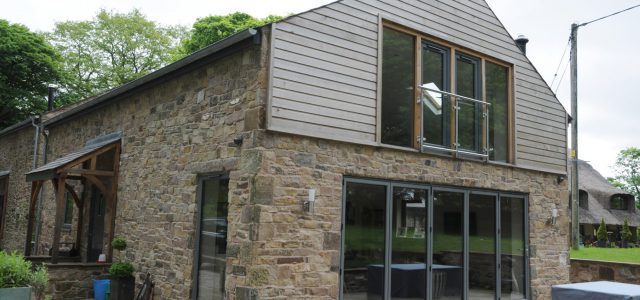
RURAL PLANNING CHANGES
Richard Maudsley of Clitheroe-based Sunderland Peacock explains recent changes to the planning laws that could allow more agricultural land owners to diversify into property
In April this year changes came into effect that support the development of redundant agricultural buildings. We ask RIBA chartered architect Richard Maudsley and director at Sunderland Peacock and Associates, what the impact will be on rural development.
Can you explain in more detail what the changes under Class Q permitted development rights will mean to farmers and land owners?
These rights have actually been around for a number of years now, however the changes in April have provided further positive clarification and detail about the extent of the works for an agricultural conversion. It is a direct mechanism put in place by the Government to provide new rural housing and offers an important opportunity for landowners to utilise existing building assets.
What would be the process that farmers would go through if they have a redundant farm building?
It is important to undertake an early review of the building and site to establish a robust strategy moving forward. We would visit the site to review and discuss this, and then progress with implementing the process.
Are there any rules as to what specific types of buildings will benefit from the new rules?
All buildings from stone barns to portal frame buildings can be applicable and careful consideration as to the character, size and design most suitable for the site and location should feed into the strategy of an application to maximise value.
The building has to have been used for an agricultural use prior to 20th March 2013 and applications are assessed against certain criteria relating to highways, flood risk, noise impact and contamination. Note that listed buildings, protected sites or conservation areas are exempt from Class Q rights and will require an alternative approach.
To what extent can these redundant buildings be developed – what, if any, are the limitations?
The existing building structure must be suitable for conversion to allow for loadings associated with a conversion. Class Q rights allow for the introduction of elements such as new walls, roof, windows, external cladding, services reasonably necessary to carry out the conversion along with partial demolition within certain parameters and allows the building to be converted into up to five dwellings.
What important points should landowners consider when seeking development under the Class Q rights?
It is important to have a robust overall approach in place for the site as a whole. Developments need to maximize positive characteristics and work in harmony with the surrounding site and landscape.
To what extent do you think our rural countryside will be affected – are we likely to see lots of development in the Ribble Valley?
I believe it is a very constructive way to develop and provide local housing in an organic way by utilising existing buildings which are already part of the landscape. These conversions provide a positive contribution to the rural fabric as well as being amazing and unique spaces to live. Externally they provide a diverse range of aesthetics, varying throughout the country, in which we have extensive experience.
For more details about the planning changes and for specialist advice, Richard can be contacted directly at Sunderland Peacock and Associates.
Sunderland Peacock & Associates
Hazelmere
Pimlico Road
Clitheroe BB7 2AG
01200 423178
richard@sunderlandpeacock.com
www.sunderlandpeacock.com

